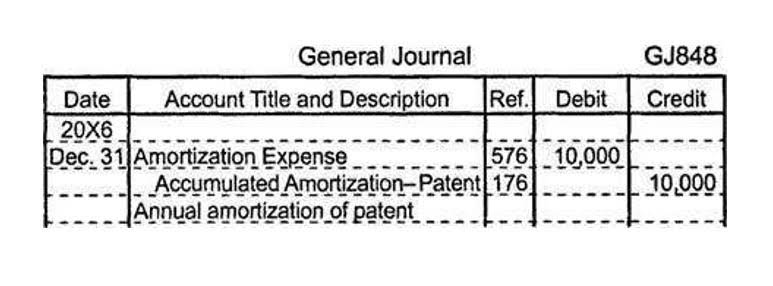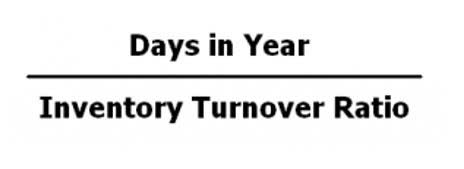The entity could measure the transactions and event in its own country currency if that currency is stable and internationally recognized. Not recognizing the affects of inflation can be a little deceiving for external users, but FASB decided not to worry about it. For example, if a company purchases a building for $100,000 and holds on to it for 30 years, it will still be reported on the balance sheet for the original purchase price not adjusted for inflation. The building could vary well be worth $1,000,000 now because of 30 years of inflation. For example, we have to property shown in the balance sheet, one cost $ 30,000, and another cost $ 300,000.
The monetary unit assumption does not provide for differences in the value of a dollar due to the passage of time. One problem with the monetary unit assumption is that it disregards the effects of inflation when recording. Another problem with this assumption is that it can be deceiving or misleading for external users of financial statements. On the other hand, from an investor’s point of view, currency conversion plays a vital role in assessing the performance and value of foreign investments. Investors often compare financial statements of companies operating in different countries to identify potential investment opportunities. To make accurate comparisons, they need to convert financial data into a common currency.
- It forms the basis for preparing financial statements and allows for comparability and consistency in reporting financial information.
- Problems might occur as a result of changes in the value of money as well as a lack of understanding of qualitative aspects such as management quality and the expansion of competition.
- Our team of reviewers are established professionals with years of experience in areas of personal finance and climate.
- By understanding the implications of this assumption, businesses can ensure accurate and meaningful communication of financial information to stakeholders.
- – One of Nike’s famous athletes is caught in a scandal and many people stop buying Nike products in protest of the athlete.
In some countries the buying power of the currency fluctuates so widely that financial statements must account for the inflation and devaluation of currency. We call that the Monetary Unit Assumption, the assumption that our monetary unit, the dollar, will have a relatively stable value. Currently the FASB does not recognize the affects of inflation in financial reporting. A company’s property, plant, and equipment on 20X9 statement of financial position amounted to $2 billion. The monetary unit and stable dollar assumption prohibits any adjustment to current or prior period figures to account for the inflation. Additionally the assumption is sometimes referred to as the money measurement assumption or the money measurement concept.
It means that in the United States we use the dollar as our unit of measure.
Suppose IJ&K Creatives has very talented, skilled, and passionate designers and animators. The company cannot record them as their assets under the monetary unit assumption. This is because the monetary unit assumption instructs the company to record only those transactions that can be measured in monetary value in its books. Similarly, an organization cannot express the skills of an individual in dollars.
The monetary unit assumption is the principle that every business event and transaction must be expressed in terms of a common denominator currency. This assumption dictates that a company records its books of accounts in terms of a specific global currency, usually the US dollar. – One of Nike’s famous athletes is caught in a scandal and many people stop buying Nike products in protest of the athlete. Nike does not report a loss at all on its financial statements because of the monetary unit assumption. Since a boycott involves no business transactions, the monetary unit dictates that Nike shouldn’t report anything.
The assumption is that once a transaction or business activity occurs, it is first converted into money before being recorded in financial or accounting books. The recording of a business transaction depicts the stable monetary unit assumption when a stable currency is used as a financial measure of the transaction. Inflation is a phenomenon that affects monetary unit assumption definition economies worldwide, and its impact on the monetary unit assumption is a crucial aspect to consider in accounting practices. The monetary unit assumption, one of the fundamental principles of accounting, assumes that the currency used in financial statements remains stable over time. However, inflation can erode the purchasing power of a currency, leading to significant challenges for businesses and accountants alike.
An information that cannot be expressed in terms of money is useless for financial accounting purpose and is therefore not recorded in books of accounts. Using the monetary unit assumption, a company records its business transactions in dollars or some other unit of currency. It cannot account for an item that does not have a quantifiable value such as loyal customers, excellent customer service, or a superior management team. The monetary unit assumption is a part of Generally Accepted Accounting Principles (GAAP) because it provides a sound basis for recording and reporting financial transactions. This principle allows businesses to compare their financial performance with other organizations using the same common currency.
- Remember, while the Monetary Unit Principle simplifies accounting, it does have its limitations.
- After the 2025 purchase is recorded, the balance in the corporation’s general ledger account Land is $580,000.
- The monetary unit assumption is included in Generally Accepted Accounting Principles (GAAP) because it offers a solid foundation for recording and reporting financial transactions.
- Since the value of the lecture cannot be expressed in terms of money, it cannot be recorded in the company’s books of accounts.
Providing the amount is a reasonable estimate, the monetary unit assumption is satisfied and the transaction can be recorded. The monetary unit assumption is one of the fundamental underlying assumptions used in accounting when preparing financial statements. The time period assumption allows you to acquire timely information on a regular basis about the results of operations of the business in a particular period. Timely information is very important when making investment decisions and predicting possible outcomes of business operations in the succeeding accounting periods. Monetary Unit Assumption is the accounting principle that concern about the valuation of transactions or event that entity records in its financial statements.
Is the monetary unit assumption affected by inflation?
That’s why in the absence of any evidence to the contrary, a company is assumed to be a going concern. Basic Accounting Assumptions are fundamental concepts and guidelines under which the financial statements are prepared. The windows are broken, the inside of the store is in shambles and inventory has been stolen. The retailer will only report a loss on the damaged property in his financial statement. He will not report the financial loss occurred due to the potential loss of sales from the store closing down for repairs. There is a significant difference in the purchasing power between 1992 and 2019, but under the monetary unit assumption, it is ignored.
Time Period Assumption
The assumption asserts that the only transactions that should be recorded in books of accounts of a business entity or corporation are those that the entities can measure in monetary terms. Since the money is commonly used as a way of comparing values, therefore, money is adopted as a measurement unit by all the accounting systems. To illustrate the impact of the monetary unit assumption, consider a company that operates in multiple countries.
Monetary unit principle and currency
This assumption allows accountants to quantify and compare different economic events, making it possible to analyze financial information effectively. The historical background of the monetary unit assumption is crucial to understanding its significance in accounting practices today. This assumption, also known as the currency basis of accounting, assumes that transactions and events are recorded in a common monetary unit. It provides a foundation for financial reporting and allows for meaningful comparisons between different entities and time periods. The monetary unit principle asserts that money is a measurement unit, and every transaction to be recorded in a company’s financial records must be measurable in monetary terms. Therefore, all transactions in a business setup should be expressible in a particular currency.
International standards play a crucial role in achieving this harmonization, as they provide guidelines and frameworks that countries can adopt to align their accounting practices with global norms. Currency conversion is a crucial aspect of international business and accounting. With globalization, companies are increasingly operating in multiple countries and dealing with various monetary units. This presents challenges in financial reporting and analysis, as the values of transactions and assets need to be accurately converted into a common currency for meaningful comparison. The Monetary Unit Assumption, one of the fundamental principles of accounting, assumes that financial statements are prepared in a stable and widely accepted currency. However, when dealing with multiple monetary units, this assumption becomes more complex.
The apples and oranges problem can be solved in this manner since cash, diverse physical things, and claims against others can all be described in terms of money. Please note that some information might still be retained by your browser as it’s required for the site to function. We follow strict ethical journalism practices, which includes presenting unbiased information and citing reliable, attributed resources.
However, some countries require the company to present its financial statement in local currency. This accounting principle assumes the expression the economic events (transactions) and relationship among transactions in terms of money. In more simple words we can say that Monetary Unit Assumption is the monetary expression of economic events. A very closely related concept to the monetary unit assumption is the stable dollar value assumption which means that the dollar ( or any other currency) does not lose its purchasing power over time.








